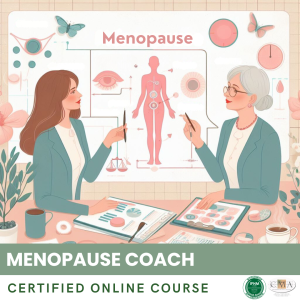Media representations of LGBTQ+ individuals have significantly evolved over the decades, reflecting and influencing both mindsets and social progress. For a long time confined to stereotypical, caricatural or tragic roles, LGBTQ+ identities have gradually gained visibility and complexity on screen.
In the 1930s to 1960s, the Hays Code governed American film production and banned the representation of “sexual perversions”, a term that then encompassed homosexuality. LGBTQ+ characters were therefore either invisibilized or represented implicitly and coded. This was the case, for example, with the character of the housekeeper in Alfred Hitchcock’s Rebecca (1940), whose obsession with her deceased mistress is suggested. Some films like The Match King (1934) or La Cage aux Folles (1978) featured gay characters, but in a comical and caricatural way.
From the 1970s, with the emergence of gay and lesbian liberation movements, independent films like Jean Genet’s A Song of Love (1950) or William Friedkin’s The Boys in the Band (1970) began to offer more upfront and authentic representations of LGBTQ+ lives, exploring themes such as coming-out, internalized homophobia, or the sense of community. But these films remained confidential and were mainly targeted at an LGBTQ+ audience.
In the 1980s-1990s, the visibility of LGBTQ+ people increased in mainstream media, but often in problematic ways. With the AIDS crisis, many films like Philadelphia (1993) associated male homosexuality with illness, death, and tragedy. Lesbians were often “invisibilized” (as in The Color Purple in 1985) or depicted as predators (Basic Instinct in 1992). Bisexual individuals were portrayed as unstable and indecisive (Fatal Attraction in 1987), while trans people were reduced to roles of sex workers or criminals (All About My Mother in 1999).
The 2000s marked a turning point with a proliferation of LGBTQ+ characters on television, in series like Buffy the Vampire Slayer, Dawson’s Creek, Queer as Folk, or The L Word. These series helped normalize the presence of LGBTQ+ characters and explore their romantic and friendship lives over the long term. They also addressed societal issues such as same-sex parenting, biphobia or transphobia. However, these characters were often confined to secondary roles and their sexual orientation or gender identity was the main focus of their narrative arc.
Since the 2010s, there has been growing diversification and complexity in LGBTQ+ representations in the media. Mainstream films like Moonlight (2016), Call Me by Your Name (2017), or Portrait of a Lady on Fire (2019) tell love stories between same-sex individuals without making them dramatic issues. Series like Sense8, Orange Is the New Black, or Pose feature a wide variety of LGBTQ+ characters of different origins, social classes, and body sizes. They explore topics such as non-binary identities, the intersectionality of oppressions, or ballroom culture. We are also seeing the emergence of LGBTQ+ characters in popular genres such as science fiction (Black Mirror) or fantasy (Game of Thrones).
Despite these advances, numerous challenges remain. LGBTQ+ individuals are still underrepresented compared to their proportion in the population. According to the annual GLAAD report, LGBTQ+ individuals represented only 10.2% of regular characters in US series in the 2019-2020 season. Some identities such as asexuality or pansexuality are still barely visible. Racialized or disabled LGBTQ+ individuals are rarely present. LGBTQ+ characters are still too often victims of the “bury your gays” trope, i.e. being killed to advance the plot. Lastly, these characters are still too rarely portrayed by openly LGBTQ+ actors.
Media representations have a direct impact on the social acceptance of LGBTQ+ individuals. According to a US study, exposure to gay characters in the media is correlated with greater acceptance of homosexuality, especially among people who have little contact with LGBTQ+ individuals in real life. Conversely, the absence or negativity of representations contributes to the invisibility and stigmatization of LGBTQ+ individuals, with consequences for their mental health and sense of belonging.
As lesbian director Barbara Hammer pointed out, “it is hard to fight for a self-image when you don’t have one.” Media representations play a crucial role as a mirror and model for LGBTQ+ individuals, especially questioning youth. They enable self-recognition, projection, and identification with possible paths. They are also a powerful means of raising awareness and educating the general public. In this regard, the responsibility of cultural industries is immense. It is essential that they open up to LGBTQ+ creators to tell their own stories, in all their diversity and complexity.
Key points:
– Representations of LGBTQ+ individuals in the media have significantly evolved, moving from invisibility and stereotypes to greater diversity and complexity.
– Until the 1960s, LGBTQ+ characters were either absent or caricatural due to censorship from the Hays Code. The 70s saw more authentic representations emerge in independent cinema.
– In the 80s-90s, visibility increased, but often problematically, associating LGBTQ+ individuals with negative stereotypes (disease, predation, instability, criminality).
– The 2000s marked a turning point with the proliferation of LGBTQ+ characters on TV shows, normalizing their presence and exploring their lives. However, they were often consigned to secondary roles.
– Since 2010, there’s been diversification in LGBTQ+ representations concerning origins, social classes, and body sizes. Topics like non-binary identities or intersectionality are now addressed.
– Despite these advances, LGBTQ+ individuals remain underrepresented relative to their actual proportion, particularly racialized or disabled individuals. Some identities are still barely visible and characters are still often victims of negative tropes.
– Media representations have a direct impact on the social acceptance of LGBTQ+ individuals by providing positive identification models. Conversely, the absence or negativity of representations contributes to their stigmatization.
– It is critical for the cultural industries to open up to LGBTQ+ creators so they can tell their own stories in all their diversity.
👉 To download docx (Editable) file click here : Click here
👉 To download PDF file click here : Click here
👉 To download MP3 file click here : Click here






